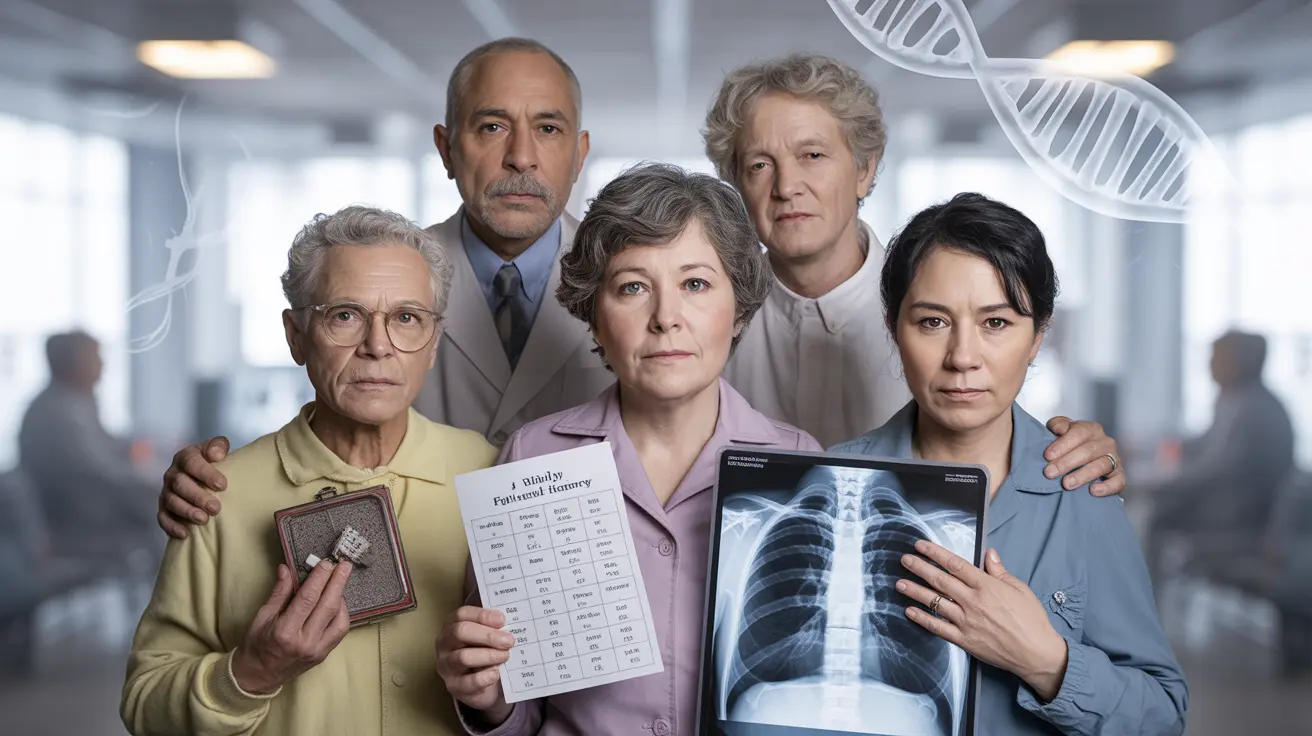Lung cancer affects people of various age groups differently, with distinct risk factors, treatment approaches, and outcomes. Understanding how age influences lung cancer development, diagnosis, and treatment is crucial for both healthcare providers and patients. This comprehensive guide explores the relationship between age and lung cancer, helping you better understand this complex disease across different life stages.
Age-Related Patterns in Lung Cancer Diagnosis
Lung cancer predominantly affects older adults, with the majority of cases diagnosed in people aged 65 and above. However, this doesn't mean younger individuals are immune to the disease. The relationship between age and lung cancer diagnosis follows specific patterns that healthcare providers must understand to ensure appropriate screening and early detection.
Peak Incidence and Age Distribution
The median age at diagnosis for lung cancer is approximately 70 years. Studies show that incidence rates begin to rise significantly after age 50, with the highest numbers occurring between ages 65-74. This pattern reflects both the cumulative effect of risk factors over time and the natural aging process of lung tissue.
Risk Factors Across Age Groups
Older Adults (65+)
In older adults, the primary risk factors for lung cancer include:
- Long-term smoking history
- Prolonged exposure to environmental toxins
- Occupational hazards
- Chronic lung diseases
- Cumulative radiation exposure
Younger Adults (Under 50)
Young adults face different risk factors, including:
- Genetic predisposition
- Second-hand smoke exposure from childhood
- Early-onset smoking
- Specific genetic mutations
- Environmental factors
Age-Related Treatment Considerations
Age significantly influences treatment decisions in lung cancer care. Healthcare providers must balance treatment effectiveness with quality of life considerations, particularly in older patients.
Treatment Options for Older Adults
Treatment approaches for older adults often consider:
- Overall health status and comorbidities
- Ability to tolerate aggressive treatments
- Quality of life priorities
- Support system availability
- Recovery capacity
Treatment Approaches for Younger Patients
Younger patients typically receive more aggressive treatment plans, including:
- Combined modality approaches
- Clinical trial opportunities
- Innovative therapeutic options
- Long-term survival strategies
- Fertility preservation considerations
Survival Rates and Age
Age plays a crucial role in lung cancer survival rates, with several factors influencing outcomes. Generally, younger patients tend to have better survival rates, partly due to their ability to tolerate more aggressive treatments and fewer comorbidities. However, individual outcomes depend on various factors beyond age alone.
Frequently Asked Questions
- At what age is lung cancer most commonly diagnosed, and how does incidence change with age?
Lung cancer is most commonly diagnosed around age 70, with incidence rates increasing significantly after age 50. The risk continues to rise with age, with the highest number of cases occurring between ages 65-74.
- What are the main risk factors for lung cancer in younger versus older adults?
Younger adults often face risk factors like genetic predisposition, early-onset smoking, and specific genetic mutations. Older adults typically develop lung cancer due to long-term smoking history, prolonged environmental exposures, and cumulative effects of various risk factors over time.
- How do lung cancer survival rates differ by age group?
Generally, younger patients tend to have better survival rates due to their ability to tolerate more aggressive treatments and fewer concurrent health conditions. However, survival rates vary significantly based on cancer stage, type, and individual health status.
- Can lung cancer occur in nonsmokers, and are the risk factors different across age groups?
Yes, lung cancer can occur in nonsmokers of any age. Younger nonsmokers might develop lung cancer due to genetic factors or environmental exposures, while older nonsmokers may face risks from cumulative exposure to radon, secondhand smoke, or occupational hazards.
- How does age affect treatment options and prognosis for lung cancer patients?
Age influences treatment decisions significantly. Younger patients often receive more aggressive treatments and have more clinical trial opportunities. Older patients' treatment plans must consider overall health status, comorbidities, and quality of life factors. Prognosis varies based on individual circumstances rather than age alone.




